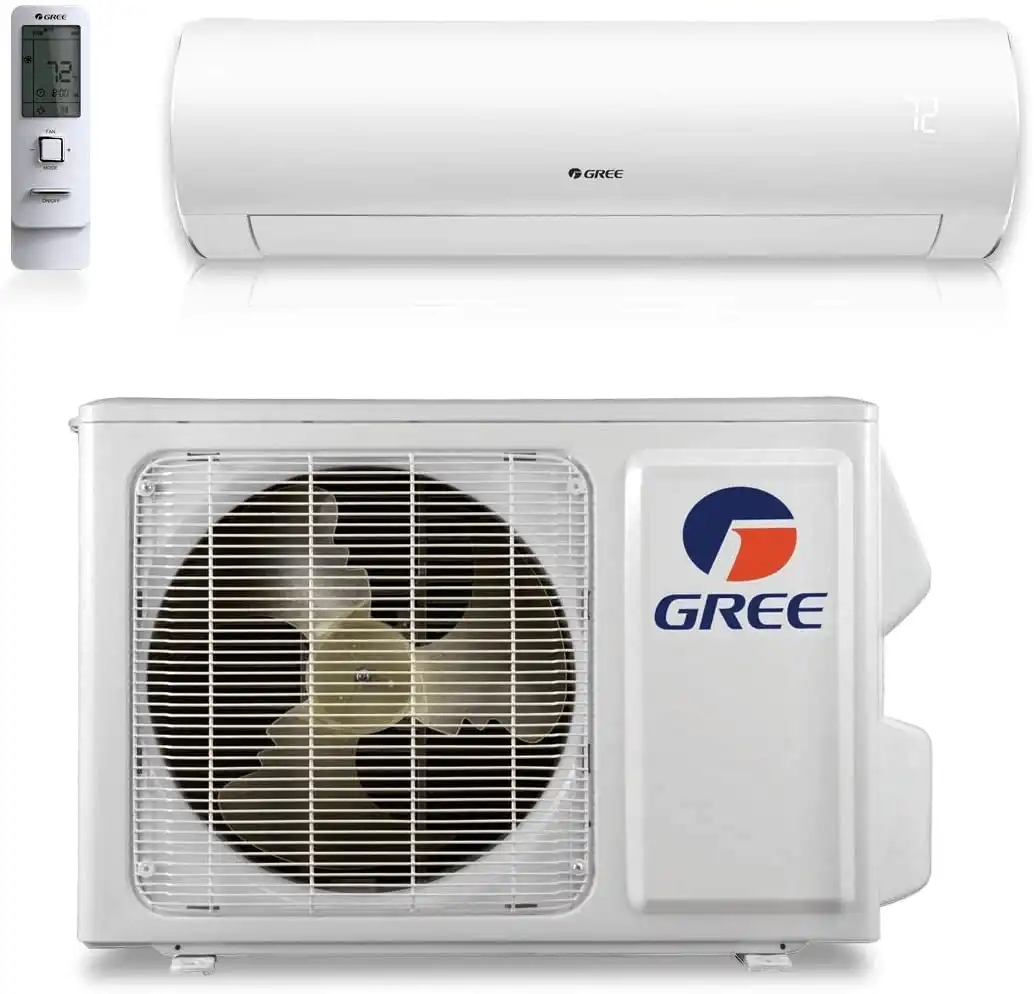
VRF HVAC Systems: The Complete Contractor's Guide to Variable Refrigerant Flow Technology
Variable refrigerant flow technology represents the fastest-growing segment in commercial HVAC—and there's good reason for that growth. As an HVAC contractor, understanding VRF systems opens new opportunities for your business while delivering superior comfort solutions to your clients. This guide covers everything you need to know about VRF HVAC systems, from basic operation principles to advanced installation considerations.
What is a VRF System? Understanding Variable Refrigerant Flow Technology
A VRF system uses refrigerant as the primary heat exchange medium to provide precise heating and cooling to multiple zones within a building. Unlike traditional systems that rely on air or water distribution, VRF systems circulate refrigerant directly to individual indoor units throughout the building.
The key advantage of variable refrigerant flow lies in its ability to modulate refrigerant flow to match the exact heating and cooling demands of each zone. This means that a single outdoor unit can simultaneously provide different temperature outputs to various indoor units, delivering customized comfort while maximizing energy efficiency.
VRF systems can connect multiple indoor units to a single outdoor unit, with GREE's GMV5 and GMV6 series supporting up to 80 indoor units per system, while the Ultra Heat series supports up to 17 indoor units. This scalability, combined with precise zone control, makes VRF technology particularly attractive for hotels, office buildings, retail spaces, and multi-family residential projects.
How VRF Systems Work: The Science Behind Variable Refrigerant Flow
Understanding how a VRF system works is crucial for proper installation and maintenance. The technology operates on advanced heat pump principles, using refrigerant to capture and transfer thermal energy efficiently.
VRF Heating Mode Operation
During heating, the VRF outdoor unit expands refrigerant gas until it becomes colder than the ambient outdoor air. This temperature difference allows the system to extract thermal energy from the environment and transfer it indoors via refrigerant lines. GREE's Ultra Heat series can provide continuous heating at temperatures as low as -31°F (-35°C), with 100% heating capacity maintained at -4°F (-20°C), making it suitable for even the most challenging climate zones.
VRF Cooling Mode Operation
In cooling, the process reverses. Indoor units absorb heat from interior spaces and transfer it to the outdoor unit for rejection. The refrigerant circulation system maintains optimal temperatures in each zone while operating at whisper-quiet sound levels.
Variable Capacity Technology
The heart of VRF technology is the inverter-driven compressor, which continuously adjusts its speed and refrigerant flow based on real-time demand. GREE's advanced inverter technology operates across a 0-420Hz adjustable range, providing precise capacity control. This variable capacity operation eliminates the energy waste associated with traditional on/off cycling, providing more precise temperature control and greater energy efficiency.
GREE's GMV6 series features Enhanced Vapor Injection (EVI) technology and a two-stage, two-cylinder compressor design that optimizes performance across varying load conditions. The system uses R410A refrigerant and incorporates 360° panoramic temperature field identification for superior comfort control.
Each zone maintains individual set points based on occupancy, usage patterns, and user preferences. Advanced control systems allow facility managers to optimize performance while giving occupants control over their individual comfort zones.
Types of VRF HVAC Systems for Commercial Applications
When recommending VRF solutions to clients, you'll encounter several system configurations designed for specific applications and performance requirements.
VRF Heat Pump vs Heat Recovery Systems
VRF Heat Pump Systems operate in a single mode at any given time—either heating or cooling throughout the entire system. These systems are ideal for buildings where all zones typically require the same type of conditioning simultaneously, such as office buildings or retail spaces with consistent usage patterns.
VRF Heat Recovery Systems offer simultaneous heating and cooling capabilities, making them perfect for buildings with diverse comfort needs. Hotels, for example, might need heating in guest rooms while simultaneously cooling conference rooms or kitchens. This flexibility makes heat recovery systems particularly valuable for mixed-use buildings.
Air-Source vs Water-Source VRF Systems
Air-Source VRF Systems extract heat from outdoor ambient air, making them the most common installation type. These systems work effectively in most climates and require minimal infrastructure modifications.
Water-Source VRF Systems draw heat from nearby water sources such as geothermal wells or cooling towers. While less common, these systems can provide exceptional efficiency in the right applications.
Indoor Unit Configurations
Indoor unit options include both ductless and ducted configurations. Ductless units offer maximum installation flexibility and individual zone control, while ducted units can integrate with existing ductwork or provide more traditional air distribution patterns.
Key Benefits of VRF Air Conditioning Systems
VRF systems deliver multiple advantages that translate directly into value for your clients and opportunities for your contracting business.
- Energy Efficiency and Cost Savings: VRF technology provides more energy as heat than the system consumes as electricity. The variable capacity operation means the system uses only the energy needed to maintain comfort, resulting in significant utility cost reductions compared to traditional systems.
- Superior Comfort Control: The ability to maintain different temperatures in different zones eliminates the hot and cold spots common with conventional systems. Continuous operation at low speeds provides steady temperatures without the temperature swings associated with on/off cycling.
- Ultra-Quiet Operation: GREE VRF systems operate at exceptionally low sound levels, with GMV6 outdoor units achieving operation as low as 22 dB(A) through professional noise-reduction technologies, and GMV5 outdoor units operating as low as 45 dB(A) in quiet mode. This makes them virtually silent in occupied spaces.
- Environmental Sustainability: All-electric VRF systems eliminate the combustion byproducts associated with fossil fuel heating, including carbon dioxide, nitrogen dioxide, and particulate matter. This clean operation helps buildings meet increasingly strict environmental standards and sustainability goals.
- Design Flexibility: The compact, lightweight equipment requires less structural support and enables creative architectural solutions. The reduced equipment footprint can even create opportunities for revenue-generating rooftop amenities.
VRF System Installation Considerations for HVAC Contractors
Successful VRF installations require careful attention to several key factors that differ from traditional HVAC system installations.
- Proper Sizing and Load Calculations: VRF systems require precise load calculations for each zone to ensure optimal performance. Unlike oversized traditional systems that simply cycle more frequently, an improperly sized VRF system will struggle to maintain comfort efficiently.
- Refrigerant Line Installation: The refrigerant piping network is critical to system performance. Proper insulation, pitch, and support are essential. Pay careful attention to manufacturer specifications for line lengths, elevation differences, and branch configurations.
- Multi-Zone Design Principles: When designing multi-zone systems, consider the interaction between zones and the overall system balance. Ensure refrigerant lines aren't so long that they impede heat transfer, which can be particularly challenging in large commercial installations.
- Integration Capabilities: Modern VRF systems can integrate with building automation systems through standard communication protocols like BACnet. GREE's GMV5 series uses CAN communication technology, while the advanced GMV6 series features CAN+ multi-VRF communication technology for enhanced network capabilities and ultra-quick response times. This integration capability should be considered during the design phase to maximize system efficiency and control options.
- Installation Environment: Outdoor units should be installed with adequate clearance for airflow and service access. Consider seasonal weather patterns, including snow accumulation and prevailing winds, when selecting installation locations.
VRF vs. Traditional HVAC Systems: Performance Comparison
Understanding when to recommend VRF over conventional systems is crucial for contractor success and client satisfaction.
- Energy Performance: VRF systems typically achieve 30-50% greater energy efficiency compared to traditional rooftop units or split systems. The variable capacity operation and elimination of ductwork losses contribute significantly to this efficiency advantage.
- Maintenance Requirements: VRF systems generally require less maintenance than traditional systems due to fewer moving parts and the elimination of complex ductwork cleaning. However, technicians need specialized training to service refrigerant-based systems properly.
- Installation Costs: While VRF systems typically have higher upfront equipment costs, the reduced structural requirements, simpler installation, and elimination of extensive ductwork can offset much of this difference. The modular nature also allows phased installation to match project budgets and timelines.
- Operational Advantages: The quiet operation, precise temperature control, and individual zone management capabilities make VRF systems particularly attractive for occupied spaces where comfort and productivity are priorities.
- Climate Considerations: GREE's VRF systems with advanced inverter technology can operate effectively across wide temperature ranges. The GMV6 series operates in cooling mode from 5°F to 131°F (-15°C to 55°C) and heating mode from -22°F to 75.2°F (-30°C to 24°C). The Ultra Heat series provides reliable heating performance down to -31°F (-35°C), making it suitable for extreme cold climates without requiring backup heating systems.
Common VRF System Applications and Use Cases
VRF technology excels in specific building types and applications where its capabilities provide maximum value.
- Hotels and Hospitality: The ability to provide individual room control while maintaining central system efficiency makes VRF ideal for hospitality applications. Heat recovery capabilities allow simultaneous heating and cooling for different areas.
- Office Buildings: Open office environments benefit from the quiet operation and precise temperature control. The zoning capabilities accommodate varying occupancy patterns and solar loads throughout the building.
- Retail Spaces: The flexibility to condition different areas independently makes VRF perfect for retail environments with varying merchandise requirements and customer traffic patterns.
- Multi-Family Residential: Individual unit control with centralized equipment reduces maintenance complexity while providing residents with personalized comfort control.
- Retrofit Applications: The reduced structural requirements and flexible refrigerant line routing make VRF systems excellent choices for building retrofits where traditional ductwork installation would be challenging or expensive.
GREE's VRF Solutions for HVAC Contractors
As HVAC professionals, selecting the right equipment partner is crucial for your success and your clients' satisfaction. GREE Comfort offers VRF solutions designed specifically with contractors in mind.
GREE's VRF systems feature advanced inverter technology and precision engineering that delivers reliable performance in diverse commercial applications. Our systems are designed for easy installation and service, with readily available replacement parts and comprehensive technical support.
- Training and Certification Programs: GREE offers specialized VRF training sessions to ensure your team has the knowledge and skills needed for successful installations and service. These programs cover system design, installation best practices, commissioning procedures, and troubleshooting techniques.
- Technical Support Resources: Our technical support team provides installation guidance, system design assistance, and troubleshooting support throughout the project lifecycle. GREE also offers detailed installation videos and comprehensive FAQ resources to support your team in the field.
- System Design Tools: GREE contractors have access to advanced system design software and load calculation tools that simplify the specification process and ensure optimal system performance. These tools help you deliver accurate proposals and successful installations.
- Comprehensive Product Portfolio: From small commercial applications to large multi-zone installations, GREE offers VRF solutions that meet diverse project requirements while maintaining consistent quality and performance standards.
As the commercial HVAC market continues evolving toward more efficient and sustainable solutions, VRF technology represents a significant opportunity for forward-thinking contractors. Understanding these systems and partnering with manufacturers like GREE who provide solid support allows you to expand your service offerings while delivering superior comfort solutions.
GREE's Comprehensive Contractor Support: GREE offers specialized VRF training sessions to ensure your team has the knowledge and skills needed for successful installations and service. These programs cover system design, installation best practices, commissioning procedures, and troubleshooting techniques. Our technical support team provides installation guidance, system design assistance, and troubleshooting support throughout the project lifecycle. GREE also offers detailed installation videos and comprehensive FAQ resources to support your team in the field.
Advanced Design and Specification Tools: GREE contractors have access to advanced system design software and load calculation tools that simplify the specification process and ensure optimal system performance. These tools help you deliver accurate proposals and successful installations while reducing project risk and ensuring customer satisfaction.
The combination of energy efficiency, design flexibility, and operational advantages makes VRF systems an excellent choice for many commercial applications. With proper training, quality equipment, comprehensive manufacturer support, and access to professional design tools, VRF installations can become a profitable and rewarding part of your contracting business.




